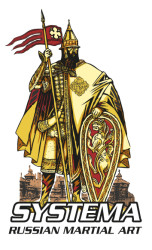Breathing and martial arts have a long history together. From the simple act of exhaling while delivering a punch, to elaborate systems of breathwork that enhance the body-mind-spirit, breathing is a critical component of any physical activity and is the foundation of all physiological processes in the body. In this article we will explore some aspects of breathing and breathwork that are directly and indirectly associated with martial arts. It will discuss how prolonged training in breathwork can lead to some amazing results as it allows you to develop as a martial artist – and as a human being.
What is Breath?
From a physiological perspective, breath is the critical activity that catalyzes all other life-supporting functions in the human body. Without breath, the infusion of oxygen into the blood stream – which then nourishes and powers all the cells of the body – does not occur. Truly breath is one of the essential building blocks of human life, along with water and nourishment. Breathing, however, is the only critical support system of human life that we have conscious control over; we have no direct voluntary control over the beating of our heart or the function of our nervous system or digestive system. Breath is unique in this regard.
From a metaphysical view, breathing is our direct and constant connection to the external world around us. With each breath we take, we are ingesting the environment in our immediate vicinity. We are – literally – absorbing and melding with the invisible, subtle energies of the world in which we are blessed to exist. From a spiritual perspective, scriptures speak of the breath as coming directly from God – or representing a power of God.
Personally, I have come to learn that breathing and breathwork are a huge gift to Man. The two breath systems that I have studied in earnest are Taoist techniques (i.e. Taiji and Qi Gong) and Systema; I am aware there are many others. There are a large number of similarities and also many differences between these two phenomenal breathing practices. I have had some deeply powerful and profound experiences as a result of doing these techniques over the years. The question that I have been asked many times is “Which one is better?”. I cannot answer that question. And even if I could, it would only be my unique perspective about the subject. What I can say without hesitation is that they both work. As with any skill, proper practice and correct teaching are critical for a student to succeed and progress. I know that many people dismiss Qi Gong automatically because of its esoteric and seemingly bizarre exercises (for the record, I agree that some of the exercises do seem a bit bizarre). But I have focused most of my practice in Qi Gong on two core sets of techniques, both very simple in form and function. And I have had some awesome “break-through” moments by practicing in this manner.
Regarding Systema breathing – where do I begin? Breathwork is so integral to Systema that you cannot truly discuss one without the other. As a reminder, “Systema” (or CИCTEMA in Russian) means “The System”. It is that simple and that profound. The System is much more than martial arts practices – it is a “system” for the complete evolution of a human being. As Vladimir Vasiliev, the foremost teacher of Systema outside of Russia, sometimes says “It just so happens that Systema is a martial art.” – hinting at the multiple layers to be discovered by practicing this art.
Breath training in Systema begins with some basic physical exercises performed with proper breathing. The objective is not to do “more” of any given exercise, but to let the breath lead and power the exercise. When practiced in this manner, you begin to become much more attuned to how your body functions and responds to certain variables. One of the the things that most people quickly realize is how much tension is held in the body under normal circumstances. Proper breathing helps to identify and dissipate this tension – whether you are exercising or just sitting at your desk. Relaxation is so important to Systema – and to life in general. I never realized just how much tension – physically, emotionally, mentally – even spiritually – I was carrying around with me until I started doing the Systema breathing exercises.
As you continue with Systema breathing over time, you should experience break-through moments. Things like being able to physically perform a movement that used to be very difficult for you; or realizing your strength or endurance have increased without any overt changes to your muscularity; or you notice you are just more relaxed and peaceful throughout the day. As more time goes by, and the breathing becomes a part of you, this is when – in my opinion – real progress in the practice of Systema becomes possible. Coincidentally, you will also notice that this is when you find more and more things in life become easier – or you discover some things are more important to you than you realized, while others are not so important any more. Slowly, while you weren’t really watching what was happening, the breath training has been transforming you from the inside out.
Remember, the single most important concept of Systema breathing (or any breathing system that I have seen) is to obtain a true state ofrelaxation. Relaxation does not mean limp, or sleepy, or dazed. True relaxation allows the human body, mind and spirit to function at its highest levels. The hard part is to fully grasp this concept – and then apply it. In fact, mentally understanding the idea of relaxation is actually pretty easy. Applying it is much harder (for most of us). And then you need to apply it when it matters most: i.e. during a high-stress situation. As martial artists, we often jump to combat as a high-stress situation – and it is. But Systema breathing is applicable to all areas of life where stress can be involved.
On that note, in fact, here is a personal experience with breathing that most likely saved other lives, as well as my own: Systema Breathwork Article
Once you reach the point where you don’t have to “work” for the relaxation you get from breathing, this is when your movements, your thoughts, your intentions all flow naturally and you experience a deeper meaning in almost everything you do or observe. The wonderful thing about System breathing is there is always another level or layer to explore, no matter how long you have trained or how far you have advanced. And wherever you are at this moment is still fulfilling because you are still learning – mostly about yourself. And that really is the end goal of training in Systema.
I am truly grateful for having found Systema and the breathing techniques that it teaches. I know it has changed my life in many ways. The only regret I have is I wish I had discovered it sooner…




